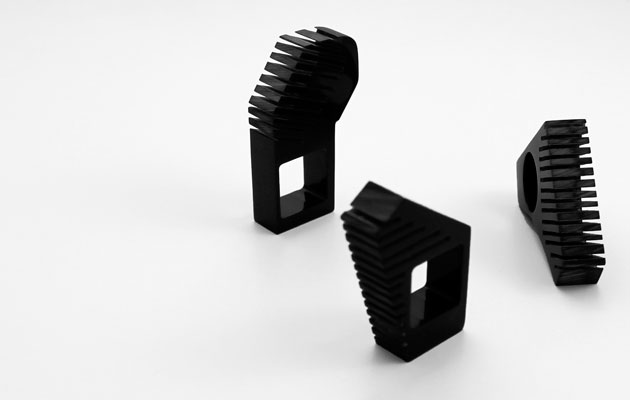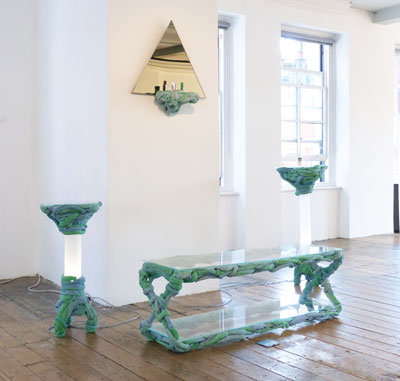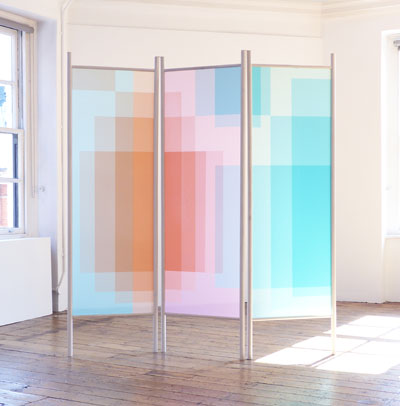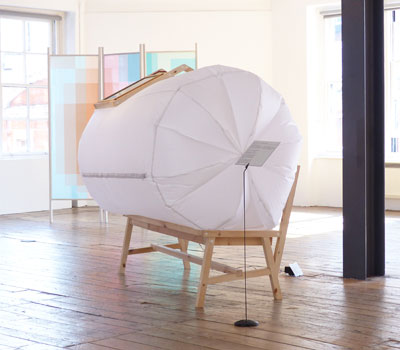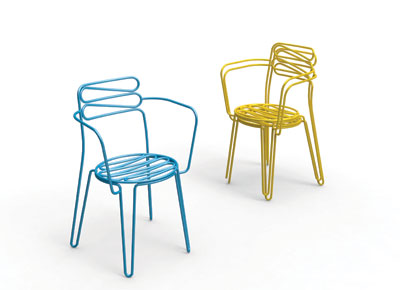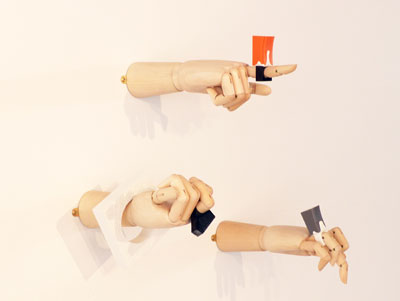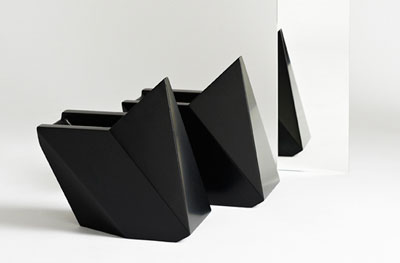|
|
||
|
An exhibition of work by new designers aims to show that there’s more to the field than mass manufacture “So much focus at the moment is on the newest products by the bigger brands. I wanted to show young designers that there is a different model ‑ a different way of finding your feet before you go on to work with manufacturers. And, if you don’t want to do that, these are designers here that are working in a different way very successfully.” The Aram Gallery curator Héloïse Parke is discussing Future Stars?, an exhibition of projects by recent graduates that she hopes demonstrates this alternative way of designing and producing work – without a specific focus on mass production.
James Shaw, for example, has made Plastic Baroque (above) using an extrusion gun that pipes out molten thermoplastic, which hardens to form gaudy, other-wordly structures. The range comprises a coffee table and two candelabras displayed around a fireplace.
Kim Thome, meanwhile, has created two installations that explore light and colour. The first ‑ Layers (above), a colourful screen comprising slim pieces of glass patterned using photographic gels ‑ was designed specifically for the brightly day-lit Aram Gallery. The second, which builds on a previous work for Selfridge’s with Bethan Laura Wood, is an abstract pattern of coloured tubes lights on a plain wall.
Thor Ter Kulve’s Parkbench Bubble (above), was also made specifically for the show, using leftover wood from the RCA graduate show. The design was inspired by Kulve’s observations of working life in Amsterdam and London. A simple wooden bench is transformed using the integrated fan into a person cocoon, complete with a solar powered USB point. “It is a speculative comment on future human working needs – seemingly, a shelter and an electronic device charging station,” says Kulve.
Lola Lely presented her Ply Leather Side Tables, a series of vibrant furniture made from moulded leather and wood, inspired by a recent collaboration with a shoemaker.
Maria Jeglinska’s two projects demonstrate the two sides of a designer’s practice that Parke is referring to. Her protoype for the lithe Little Black outdoor chair (above) ‑ named after Poland’s favourite coffee ‑ is one of a range of five items she has designed for a Polish manufacturer.
Her Drawn Objects (above), on the other hand, is a more experimental work ‑ an examination of what happens when two-dimensional drawings are translated into three-dimensions, painted onto wooden turned objects.
Two designers explored the potential of Corian ‑ a material most associated with kitchens and bathrooms. Sophie Thomas’ Planet range of jewellery (above) is made out of various shaped blocks in orange, black and white. Some are stuck together using glue in a contrasting colour, with the adhesive forming distinctive but imperfect shapes of its own.
Cat Potter used Corian in Freja (above and top), an angular, conceptual shoe the explores the colour possibilities of material. She has displayed a newer pair of shoes, in brass and walnut, alongside them. “These works show that you don’t have to work with a particular manufacturer or have a lot of money to design,” says Parke. “None of these designers said, ‘I’d love to do that but I can’t afford it’ or ‘I don’t have the tools’ ‑ they all designed and worked within their means and abilities.” “The question mark in the title,” she adds, “is because there is a question over whether they will continue to be satisfied working in this way.” Future Stars? can be seen at the Aram Gallery until 25 October 2014 |
Words Debika Ray |
|
|
||

